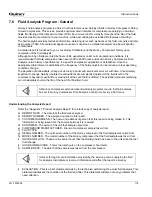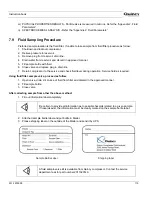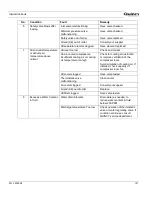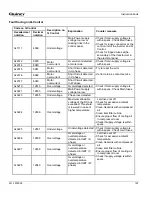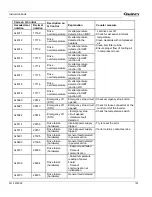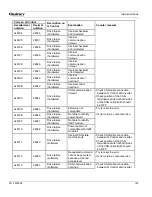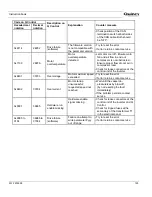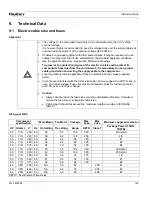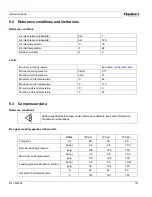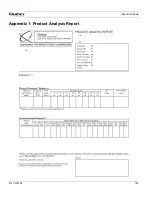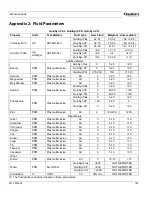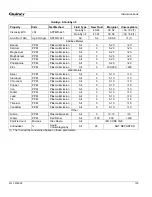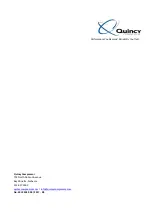
Instruction book
2012 2039 28
117
7.7 Shell/Tube Heat Exchanger
Shell/Tube Heat Exchanger service recommendations
Each heat exchanger has been cleaned at the factory and should not require further treatment. It may be well
to inspect the unit to be sure that dirt or foreign matter has not entered the unit during shipment. The heat
exchanger should be mounted firmly in place with pipe connections tight.
If sealant tape is used on pipe threads, the degree of resistance between mating
parts is less, and there is a greater chance for cracking the heat exchanger castings.
Do not over tighten. When storing the unit, be sure to keep the fluid and water ports
sealed.
If storage continues into cold winter months, the water chamber must be drained to
prevent damage by freezing.
Performance information should be noted and recorded on newly installed units so
that any reduction in effectiveness can be detected. Any loss in efficiency can
normally be traced to an accumulation of fluid sludge, or water scale.
Recommendations:
Replace gaskets when removing end castings. It is recommended that gaskets be soaked in oil to prevent
corrosion and ensure a tight seal.
Salt water should not be used in standard models. Use salt water in special models having 90/10 copper-
nickel tubes, tube sheets (available on C/CA Series models only), bronze bonnets and zinc anodes on the
tube side. Brackish water or other corrosive fluids may require special materials of construction.
When zinc anodes are used for a particular application, they should be inspected two weeks after initial start-
up and also anodes need to be checked once a month until a wear pattern is established for a given
application/environment.
At this time, by visual inspection of the anode, determination of future inspection intervals can be made,
based on the actual corrosion rate of the zinc metal.
The zinc anodes must be replaced when the zinc body is 75% depleted.
It may be necessary to drain the water chambers of the exchanger to protect it from damage by freezing
temperatures. Drains are provided in most standard models.
The oil chamber of the exchanger may become filled with sludge accumulation and require cleaning. It is
recommended that the unit be flooded with a commercial solvent and left to soak for one-half hour. Back
flowing with the solvent or regular fluid will remove most sludge. Repeated soaking and back flowing may be
required, depending on the degree of sludge build-up.
It may be necessary to clean the inside of the cooling tubes to remove any contamination and/or scale build
up. It is recommended that a fifty-fifty percent solution of inhibited muriatic acid and water may be used. For
severe problems, the use of a brush through the tubes may be of some help. Be sure to use a soft bristled
brush to prevent scouring the tube surface causing accelerated corrosion. Upon completion of cleaning, be
certain that all chemicals are removed from the shell side and the tube side before the heat exchanger is
placed into service.
Summary of Contents for QGV 40
Page 2: ......
Page 16: ...Instruction book 2012 2039 28 16 Main components Main components...
Page 128: ...Instruction book 2012 2039 28 128 Appendix 1 Product Analysis Report...
Page 131: ......
















